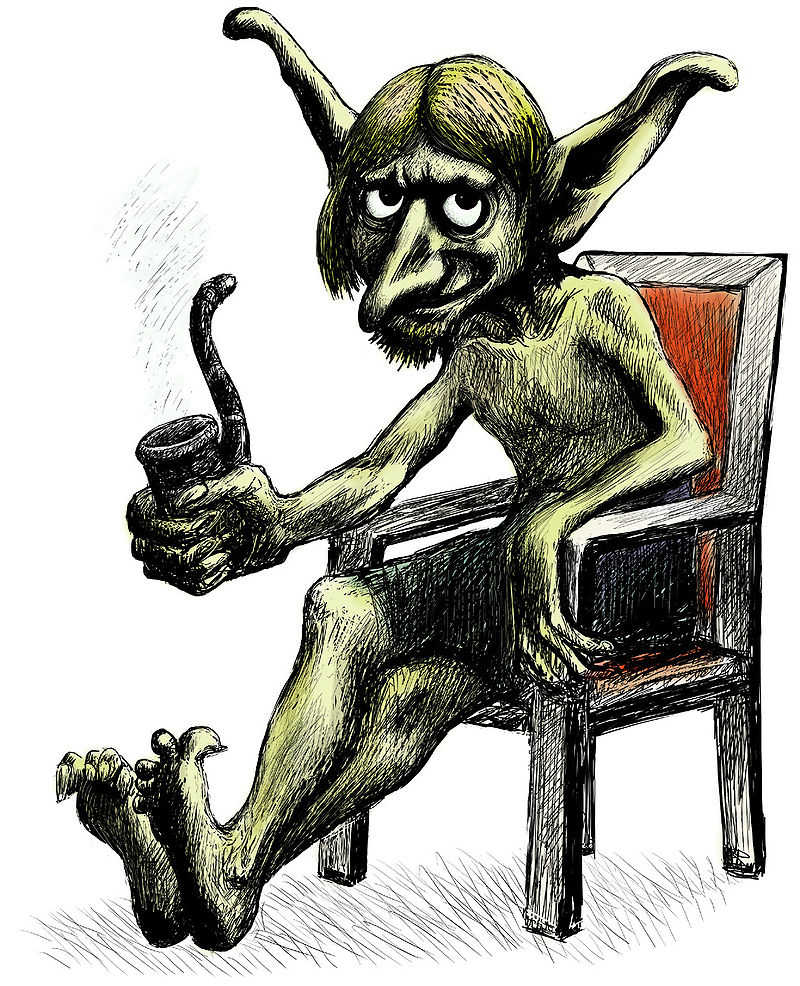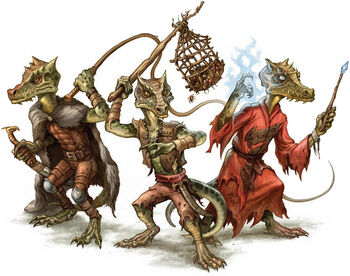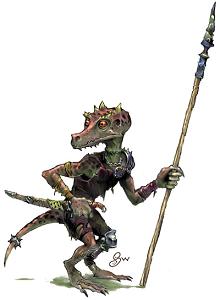Last session in Kingmaker (which still is the only session we have gotten around to play) the party encountered a group of kobolds. That got me thinking about these classic RPG monsters that seem so familiar for most players. So here’s a closer look at the background of kobolds known from D&D and Pathfinder campaigns.
The Historical basis

Kobold is a name from Germanic mythology, they are most often depicted as humanlike figures the size of small children. The legends tell of three major types of kobolds. Firstly as something like house sprites that could perform malicious tricks on the inhabitants if insulted or neglected (similar to the Scandinavian stories about husnisser and tomter). Another kind is the water kobold, the Klabautermann, who is said to assist sailors and fishermen. The third kind was a subterranean species living in mines appearing much more ugly and wicked minded. It is this kind that the metal Cobalt is named after.
The RPG beginnings
Kobold was one of the monsters included in the D&D box set in 1974, also appearing in the first edition Monster Manual in 1977. There aren’t much of the German legends that appear in Gygax’s version of the kobold. They are still described as small humanoid creatures and often subterranean, but now they also have scaly skins and a more reptilian outlook. They were one of the weaker creatures, with max 4 hp (the same as a magic-user) and an armor class of 7, but was only encountered in very large numbers (the MM entry lists No. appearing between 40-400). They were described as having a long-going feud with gnomes and the published adventures often had the kobolds deploying guerrilla tactics, utilizing traps and ambushes to take on tougher opponents and making them a challenge even with their otherwise puny stats.

The Kobold evolves
In AD&D 2nd edition the description of the kobold got slightly altered. Things like “They smell of damp dogs and stagnant river” and having them make yapping dog sound made them appear a lot more canine in appearance. I must confess, as DM and a player I always have pictures the kobolds more as bipedal dogs than reptiles and tend to ignore things like scaly skins and them laying eggs (as it was noted in later editions).

The AD&D also introduced the kobold as a playable character race in the Complete book of humanoids (1993). It als introduced the urd, a winged kobold race. The third edition went further, shrinking them to below 3’ and having kobolds being distantly related to dragons, often serving as them as minions and having them speaking the Draconic tongue, but with a yipping accent. The various editions through the years have also expanded on the background for the kobold animosity towards gnomes often included the gnome god tricking or trapping the kobold god.
The Pathfinder Kobold

As most know, Pathfinder is based on the Open Game License system from Wizards of the Coast, basically the continuing expanding on a system compatible to D&D 3.5 edition. These kobolds follow closely the tradition D&D descriptions, having them being small reptilian humanoid with scaled skin, a snout and long tail. They are mostly found in dark forests or underground and again we have the dragon-link introduced in older D&D editions (they are presented in detail in the Classic Monsters Revisited book from 2008). They also become a possible character race with the Advanced Race Guide (2012) with an overall race point cost of 5.
Why I like Kobolds
Kobolds are a low level threat; usually encountered on low levels (they have CR of ¼). Pathfinder have made goblins as their “go-to” low level humanoid, but I feel kobold still can be used to make interesting encounters. Especially the trap-making aspect can make for fun and different set-ups. I prefer low-level RPG as it brings a more realistic element to a session, when you feel a more tangible danger and risk going down without healing readily available (at higher levels you can always be brought back if it’s not a TPK) and kobolds are foes that actually scale rather well. From a simple encounter against a gang of kobolds, to elaborate ambushes and mass combat involving hundreds of kobolds (for example storming a whole village). Toe-to-toe a kobold is no match for a PC, but throw in a few helpers to flank, a trap, surprise attacks and even a few adventure classes for special kobolds and you have a memorabl RPG session.


